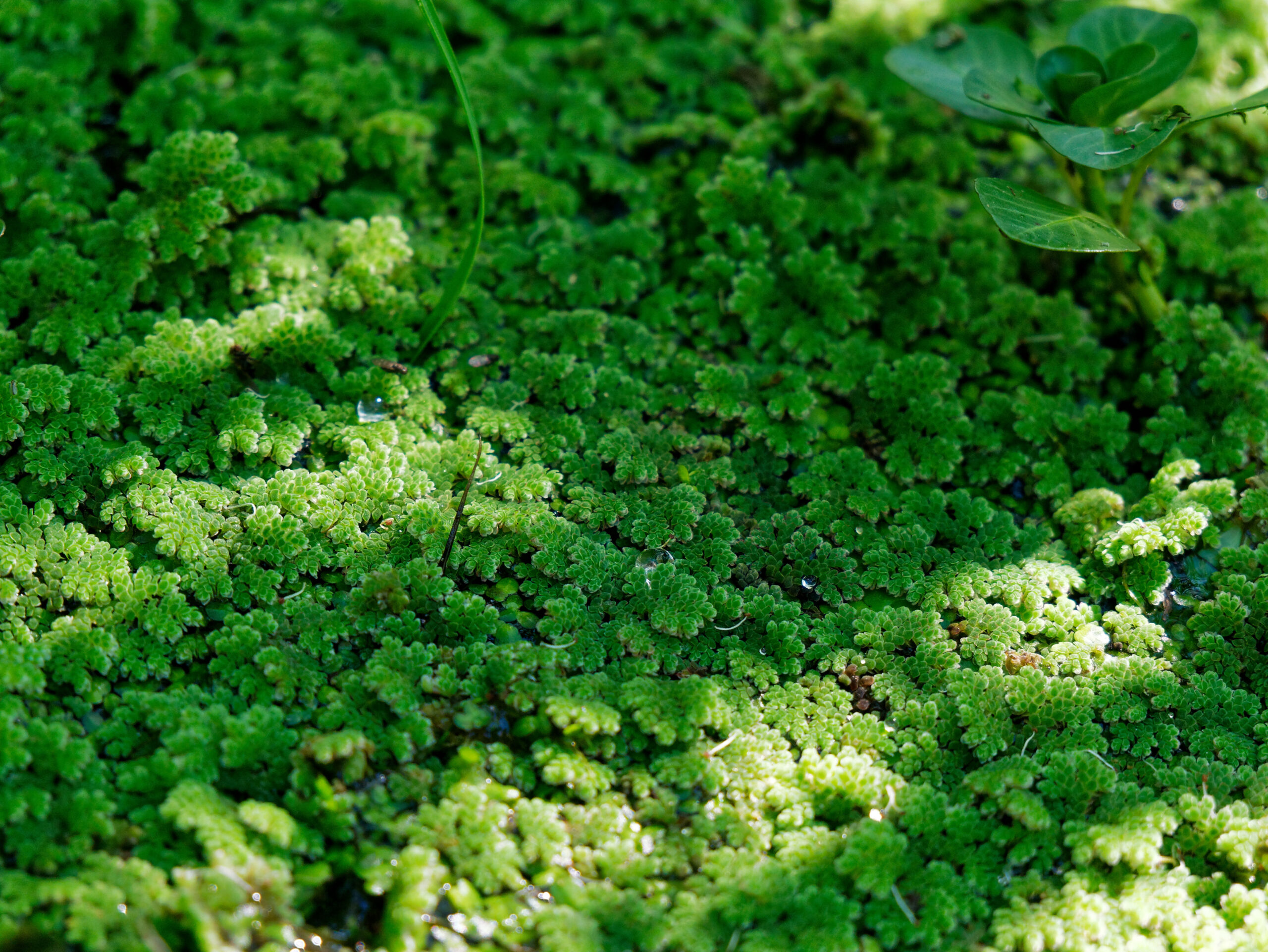Suddenly, someone shouted with enthusiasm, «Check out this alga!»
Like many start-ups before us, at some point, we were faced with the task of giving our company a name. But how do you do that? At last, none of us has chosen his own given name. We have to thank our parents for that, or they have to apologize to us. To avoid the latter, we first asked ourselves: Where do you find ideas for good names? «Google, obviously!» was our simple answer to this question. So, we just googled at random on the topic of climate change, carbon removal and the like.
As luck would have it, it worked pretty quickly for us. None of us remembers who it was, but suddenly one of us shouted enthusiastically, «Look at this alga!». From that moment on, our name was clear.
Just to clarify, Azolla or algae fern is actually not an own plant species but a plant genus. Thus, Azolla is the umbrella term or the umbrella group for several individual plant species.
But now enough of us and enough with the hair-splitting. Instead, let’s rather talk about what this alga is all about and what really knocked our socks off about Azolla. This tiny plant has, in fact, has already done great things for humankind.
According to a hypothetical scientific scenario, the Azolla algal fern has contributed significantly to today’s climate and, thus, the planet’s habitability for many animal species and humans. The so-called Azolla-Event caused the CO2 concentration of the atmosphere and, consequently, the Earth’s temperature to drop drastically. The Azolla-Event describes the massive spread of the algal fern in the Arctic Ocean about 49 million years ago. The prevailing conditions with tropical temperatures and an almost stagnant dead sea with an overlying nutrient-rich freshwater layer were ideal for the plant’s growth. Over a period of 800’000 years, the massive expanse of ocean covered with the algae fern finally removed a considerable amount of CO2 from the atmosphere. The CO2 was absorbed by the algae through photosynthesis and ultimately stored for millions of years after it died and sank to the bottom of the sea. The oxygen-poor lower layers of the Arctic Ocean largely hindered the metabolism of the dead biological material by microorganisms, thereby preventing the release of CO2 and other greenhouse gases back into the atmosphere. Thus, Azolla paved the way for an ice age on the planet that continues to this day, with polar ice caps frozen all year round. However, it took a while with strong temperature fluctuations until the climate finally settled and life as we know it today became possible.
Nevertheless, the Azolla event is far from being solely responsible for our current climate. It is much rather the result of a chain of events. Those past events show us, on the one hand, that we must tackle the problem in different places simultaneously. On the other hand, it points out that the fight against climate change is generally a team effort.
The concentration of greenhouse gases in our atmosphere is steadily increasing again after about 10’000 stable years due to human activity. This leads to higher temperatures and more extreme weather events. To preserve biodiversity on our planet and keep it habitable for us humans, we need strong partnerships once again, be it between technology and nature, between the countries of the world or between our customers and us.
We hope to have you by our side in this endeavor. Together we can make a difference.
Support our projects here
Sources:
Brinkhuis, H., Schouten, S., Collinson, M. et al. (2006). Episodic fresh surface waters in the Eocene Arctic Ocean. Nature 441,606–609 (2006). https://doi.org/10.1038/nature04692
Huizen, J. (2014). Can the Fern That Cooled the Planet Do It Again? Scientific American. Retrieved from https://www.scientificamerican.com/article/can-the-fern-that-cooled-the-planet-do-it-again/
Neville, L. A., Grasby, S. E. & McNeil, D. H. (2019). Limited freshwater cap in the Eocene Arctic Ocean. Sci Rep 9, 4226. https://doi.org/10.1038/s41598-019-40591-w
Pearson, P., Palmer, M. (2000). Atmospheric carbon dioxide concentrations over the past 60 million years (2000). Nature 406,695–699. https://doi.org/10.1038/35021000
Photo credits:
Image by Thuriau, licensed under CC BY 2.0, https://www.flickr.com/photos/154525892@N05/43983003624



